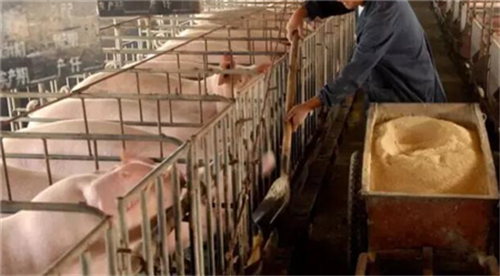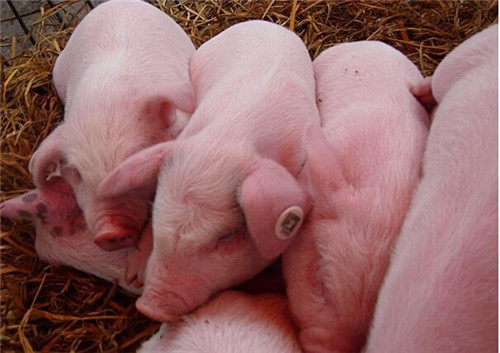The causes and countermeasures of sow hysteritis in large-scale pig farms!
In the large-scale pig farms produced by the assembly line, the most concentrated expression of uterine inflammation is in the breeding link. Among the weaned sows transferred to the breeding house, the incidence of uterine inflammation reached 5% Mel 7%, while the final elimination rate of infected sows was as high as 80%. The resulting loss has increasingly become one of the key factors affecting the economic efficiency of pig farms. The author focuses on finding the causes from the production operation process, and looking for countermeasures from the implementation of the system and treatment, in order to provide reference for pig farm managers.
I. the cause of the occurrence
1. Artificial infection during parturition in sows.
Sows usually give birth at night, and for midwives in large-scale pig farms, they can complete the production of hundreds of piglets in 2-3 days. Weaning, tail-cutting, tooth-breaking, earring. At the same time, it is necessary to fill in the correct production records or follow the procedure for advance immunization.
It is indeed a tedious and monotonous task. When the birth canal of the sow is narrow, the birth is weak, the delivery time is too long, or when it is confirmed that the sow is finished, the midwife will be forced to use manual midwifery, especially in the cold winter or when the midwife fails to disinfect the arm properly. External foreign bodies or microbes then enter the uterus to cause infection.
2. Postpartum infection in sows
After giving birth, the sow's physique is weak, and the cervix can not be completely closed for more than ten days after delivery. At the same time, piglets in this period of time, the most prone to diarrhoeal diseases, if the delivery room disinfection is not favorable, it will increase the possibility of postpartum infection uterine inflammation in sows.
3. Infection during artificial insemination in sows.
At present, artificial insemination technology is widely used in large-scale pig farms, and the application of this technology greatly reduces the feeding cost of boars and the spread of reproductive diseases. However, too much human intervention also increases the possibility of uterine inflammation in sows. In the specific operation, the cleaning of vulva, the insemination process of 2-3 times, the cleanliness of inseminal apparatus, the proficiency of insemination personnel and the mechanical injury of vagina are the causes of uterine inflammation and infection.
4. Infection of sows during outdoor exercise
Large-scale pig farms have special sports grounds for reserve sows and non-estrous sows for outdoor sports, with the help of light, exercise, temperature and other comprehensive conditions to stimulate the synthesis and secretion of reproductive hormones in sows. Sows chase and chase and play in the playground, often making their bodies covered with mud, especially when stagnant water is left in the playground, the pollution of pigs is more serious. After the event, if the breeders can not carry out timely and effective cleaning, it is very likely to cause uterine infection in sows during recessive estrus.

II. Prevention and control measures
1. Improvement and implementation of the management system
First of all, it is clear from the system that the breeding work is the common responsibility of breeding personnel, delivery personnel and delivery room management personnel, in order to change the traditional independent division of responsibility of the three parties. The formulation of the system is based on the percentage of uterine inflammation in sows, the midwifery personnel are responsible to the delivery room managers, the delivery room managers are responsible to the breeding personnel, and the breeding personnel are responsible for the total number of litters and abnormal elimination rate of sows. so that the reproductive health of sows can be guaranteed in every link of production, so as to control the occurrence of uterine inflammation in the system.
2. Treatment of sow hysteritis.
Due to the objective reasons such as long treatment cycle of uterine inflammation, easy recurrence of the disease and low fecundity after recovery, it has become one of the important diseases troubling pig farm technicians. In clinical practice, the author gradually realized the pathological features of the disease, and formed his own treatment principles and treatment plans.
(1) the inflammation in the early stage of uterine inflammation is limited to the uterus, and the systemic symptoms are not obvious, so this is the best time to treat the disease, and the cure rate is very high. The prescription is: first rinse the uterus repeatedly with 0.1% color 0.3% potassium permanganate solution, followed by intramuscular injection of 50-80IU oxytocin to promote the discharge of the flushing fluid, and finally inject 5% metronidazole solution, chloramphenicol, lincomycin, gentamicin, Vc. Repeat 2-3 courses if necessary.
(2) uterine inflammation spread in the middle stage, causing fever, constipation and anorexia. On the basis of the above prescription, promethazine + Bupleurum was added to relieve fever, vegetable oil was mixed to moisturize intestines, trypsin + NaHCO#- [3] and other preparations were added to recuperate gastrointestinal tract and carry out large prescription treatment to control the deterioration of the disease.
(3) in the later stage of uterine inflammation, sows have taken hyperosmotic dehydration, hunger strike, malignant constitution, deficiency heat and other clinical symptoms as the main clinical symptoms, which has lost the therapeutic value for large-scale pig farms.
3. Discussion
Uterine inflammation is a uterine reproductive tract disease caused by many causes. This paper discusses the uterine problems caused by technology and management. Taking 10,000 pig farms as an example, according to the incidence of 5% of sows and 80% elimination rate of infected sows, the pig farm results in the loss of an additional 20 breeding sows and nearly 400 piglets in one year, plus feed waste, drug loss and other costs during the disease. The annual loss of the pig farm is as high as more than 100,000 yuan, and to solve this problem, we must start from two aspects: on the one hand, the implementation of the system to control the occurrence of the disease. On the other hand, the treatment of the disease, in order to shorten the course of disease and improve the cure rate. (source: pig breeding auditorium)
- Prev

Differential Diagnosis of Transmissible Gastroenteritis and Epidemic Diarrhea in Pigs
Differential Diagnosis of Transmissible Gastroenteritis and Epidemic Diarrhea in Pigs
- Next

Do you know how to treat the nutritional diarrhea of weaned piglets?
Do you know how to treat the nutritional diarrhea of weaned piglets?
Related
- On the eggshell is a badge full of pride. British Poultry Egg Market and Consumer observation
- British study: 72% of Britons are willing to buy native eggs raised by insects
- Guidelines for friendly egg production revised the increase of space in chicken sheds can not be forced to change feathers and lay eggs.
- Risk of delay in customs clearance Australia suspends lobster exports to China
- Pig semen-the Vector of virus Transmission (4)
- Pig semen-the Vector of virus Transmission (3)
- Five common causes of difficult control of classical swine fever in clinic and their countermeasures
- Foot-and-mouth disease is the most effective way to prevent it!
- PED is the number one killer of piglets and has to be guarded against in autumn and winter.
- What is "yellow fat pig"? Have you ever heard the pig collector talk about "yellow fat pig"?

